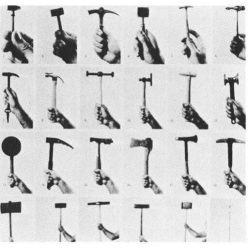2. Planning and teaching for effective learning
The value of pre-recorded resources for contextual and theoretical studies
Contextual background
CTS units rely on pre-recorded lectures and readings as the core of our delivery model. The videos/podcasts/narrated PPTs are up to 20mins long and explore key concepts and ideas to an area of interest within the wider field of Design Cultures. Students need to engage with this material prior to joining their weekly 2hr seminar in the building, which requires them to do up to 2hrs of independent study prior to the session.
Evaluation
Developed as part of the response to Covid, this flipped learning model has had mixed success. Only about half of each student group watches the material and reads the texts before the sessions; some never access the material. Students often feel like they cannot fully participate in class activities if they haven’t seen the material beforehand, so they don’t join the sessions. If tutors play the videos (or parts of) in class, those who have seen it feel like they are wasting time and disengage. Tutors also have mixed feelings: the resources are of varying quality and focus, which makes it difficult to have ownership over the curriculum. It seems like this model is ripe for a review and reconsideration in the current context.
Moving forwards
Student focus groups
Organise student focus groups to really evaluate the usefulness of this model and why students might struggle with it (if they do struggle) and what might be the benefits of it (ie. being able to review the material after the sessions).
Hierarchies of knowledge
This model presupposes that the resource is the key ‘source of knowledge’ as opposed to what is discussed in class. Going forward, it might be good to articulate the relationship between the seminar and the resource to the students at the starting session, considering how ‘production of knowledge’ happens in the seminar and renegotiating the value of the resource as a prompt for that knowledge production rather than its only source. Perhaps a collective manifesto could be produced at the start of the unit to facilitate this.
Reconsider resource formats
Rather than having 20min-long videos that mirror a ‘traditional’ lecture, could the resources have different formats/lengths? Perhaps it might be useful to create a video glossary of key themes/ideas/concepts (3-5min long) that can then be further unpacked in the seminar sessions. Could these also be supported by images that contextualise these ideas – these might be ‘easier’ to engage with for design students whose practice is often centred around visual communication? Shorter videos might also keep students more engaged.
Finding time and space
Perhaps a very pragmatic solution for the flipped classroom model might be to find the time and space for students to engage with this material in the building. This could be timetabled on the calendars and we could invite students to lead these pre-seminar sessions. That way, they could collaborate as a group to engage with the material before the session, making the seminar discussion more meaningful. Academic support, language development or library staff could also be involved in this. This also acknowledges the need to help students learn how to learn: acknowledging different levels of confidence and experience with academic study.
Emre, M. (2023) Are you my mother? New Yorker, (July 11), available at: https://www.newyorker.com/culture/cultural-comment/are-you-my-mother
Flipped learning, AdvanceHE. Available at: https://www.advance-he.ac.uk/knowledge-hub/flipped-learning-0#:~:text=Flipped%20learning%20is%20a%20pedagogical,and%20problem%2Dsolving%20activities%20facilitated
Keenan, C. (2014). Mapping student-led peer learning in the UK. Higher Education Academy. https://www.advance-he.ac.uk/knowledge-hub/mapping-student-led-peer-learning-uk
